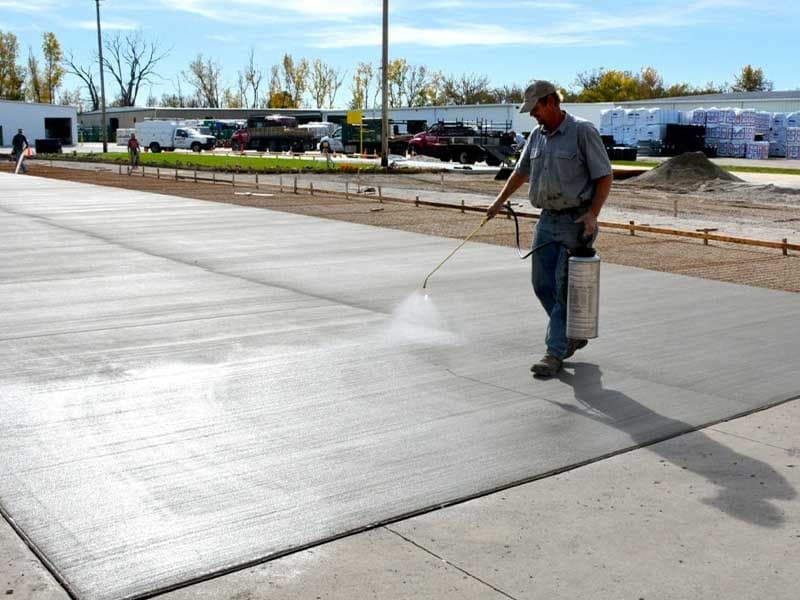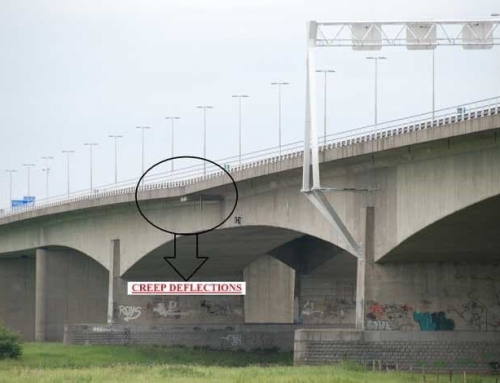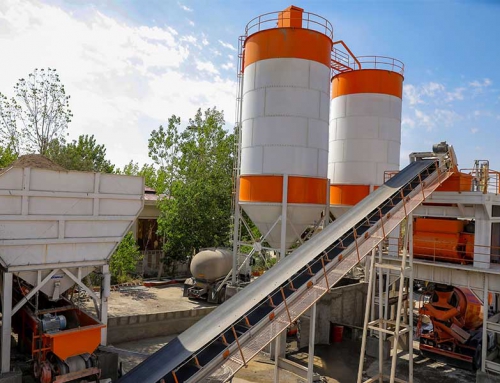Concrete curing
When discussing the concept of concrete curing, we are talking about the process of regulating the concrete’s moisture content. The most crucial curing period is 28 days following concrete placement. Why are this procedure and its timing so crucial? We are aware that cement and water undergo a chemical process that binds the aggregates (sand) to make concrete.
However, sufficient water must be present in the concrete mix during curing. If the water evaporates too rapidly, concrete will be created, but its durability and likelihood of cracking will be significantly reduced.
What is concrete curing?
Curing is the process of providing adequate moisture, temperature, and time to obtain the required qualities in concrete. When the curing procedure is performed properly, the final qualities of the concrete mixture will be durable and trustworthy.
Curing is performed to maintain proper humidity and temperature in the concrete in order to ensure its durability. Without adequate water, the characteristics of concrete cannot react and make a quality product.
The objective of concrete curing
The curing process provides the concrete with the required strength to resist incoming loads. When concrete is properly cured, it is more resilient and able to resist a variety of situations. This reduces the sensitivity of concrete to temperature fluctuations.
If concrete is not properly cured, it may degrade significantly more rapidly. Before beginning the implementation process, it is crucial that you comprehend each stage in its entirety. Depending on the building, uncured concrete may result in significant damage, injuries, and catastrophic collapse. Take the time to conduct the operation properly in order to prevent any repercussions.

The significance of execution
Curing is crucial since it assures the concrete’s ultimate quality. Concrete may be prevented from drying out, shrinking, and cracking by proper handling. Curing concrete is essential for the following reasons:
Enhance strength
According to laboratory experiments, dry-cured concrete might lose up to fifty percent of its potential strength compared to wet-cured concrete. Curing strengthens the concrete, making it more durable and less susceptible to harm in the future.
High durability
Uncured concrete has a lower surface hardness and greater abrasion resistance than properly cured concrete. Additionally, curing waterproofs the concrete surface, reducing moisture damage and extending the concrete’s durability and usable life.
Beautiful features
Uncured concrete will have a surface with a low resistance to wear. The surface of concrete eventually fractures and becomes unpleasant. However, curing may improve the aesthetics and uniformity of concrete. According to a well-known proverb, the color of the face reveals the contents of the mind!
Advantages of curing
- Increased wear resistance
- Increased resilience to cold
- Decreased surface erosion
- Increased lifespan
- Increased resistance to thermal contraction
- Boost maximum power
- Decreased cracking
- Increased durability
- Easy maintenance
- Smooth and lustrous look
Effective concrete curing parameters
Regarding the optimal treatment strategy, not all circumstances are the same. Temperature is one of the essential aspects. Concrete should ideally be put at temperatures between 15 to 35 degrees Celsius, which is the best range for curing. If we exceed this range, crystal formation in the concrete may be inhibited, leading to the concrete’s eventual deterioration.
Other variables may also influence the success rate of concrete curing, including:
- Size and shape of concrete: Ensure that the water distribution is consistent over the length of the concrete.
- Weather: Relative humidity significantly impacts the curing of concrete, particularly when wet bags are utilized.
- Refrain from overloading: If concrete is hardening, refrain from adding loads until the curing process is complete.
How long does the concrete need to cure?
Technically, the reactions during curing never cease, but this process will terminate when the concrete achieves full strength. The duration of the curing process varies but is typically around 28 days.
The period of concrete curing relies on the following variables:
- Amount of water: During the curing process, the proper amount of water must be used. When too little water is used, the process concludes extremely rapidly. When concrete is cured too rapidly, its strength is diminished. If excessive water is used, the higher layers of concrete will become weakened. The quantity of water is contingent on the meteorological conditions.
- Air temperature: curing occurs more rapidly in hot climates. As previously stated, concrete that hardens too quickly will not be as robust. In cold temperatures, concrete requires less water and a shorter cure period.
Similar to a greater temperature, wind may hasten the drying of concrete. This problem also contributes to the fragility of concrete. Therefore, when the weather is hot and windy, a longer curing time is necessary.
- Mixture components: some concrete compositions include accelerator additives. When constructing a concrete building with rapid cement curing, these kinds of combinations will be employed.
However, the final material is weaker than concrete, which has been left to cure for a longer period of time.
The following are effective components in the healing process:
- The ratio of materials in the mixture • The quantity of concrete’s compressive strength • The size of a concrete construction • The rate and speed at which concrete hardens • Ambient temperature and humidity conditions
Specifications for concrete stipulate a minimum period of cure.
The rate of moisture evaporation from concrete determines when to begin the curing process. The rate of evaporation is affected by wind, solar radiation, concrete temperature, meteorological conditions, and relative humidity. Under no circumstances should the concrete dry fast, and the curing conditions should be maintained for at least 24 hours or until the cement has fully cured.
Committee 301 of the American Concrete Institute (ACI) suggests a minimum curing duration commensurate with concrete attaining 70 percent of the stipulated compressive strength. Seven days of curing corresponds to roughly 70% of the required compressive strength.
The Indian Standard IS 456 – 2000 requires a minimum curing period of seven days for standard Portland cement and 10 days for concrete containing mineral admixtures or special cement. It is proposed that the curing period for concrete exposed to dry and hot weather should not be less than ten days and that it should be at least fourteen days for concrete with additives exposed to dry and hot weather.
According to Iran’s concrete laws and the ninth subject, typical curing times for concrete shall not be shorter than those mentioned in the table below:
| Type of cement | Conditions prevailing after the pouring of concrete into a mould | The surface temperature of concrete on average | ||
| 5 to 10 degrees Celsius | 11 to 20 degrees Celsius | 21 degrees Celsius more | ||
| Type 1, 2, 3 and 5 | medium | 4 days | 3 days | 2 days |
| Weak | 6 days | 4 days | 3 days | |
| All cement except types 1, 2, 3, and 5, as well as all cement containing pozzolanic or waste elements | medium | 6 days | 4 days | 3 days |
| Weak | 10 days | 7 days | 5 days | |
| All cement | good | No action is needed | ||
Methodologies for concrete curing
Water splatter

This treatment method utilizes a water spray to maintain the surface’s constant moistness. The water treatment method maintains the concrete’s moisture, prevents premature evaporation, and imparts the necessary strength to the concrete. It is sufficient to spray water onto the concrete surface during the day and according to the weather conditions.
Utilize a sack

Curing concrete with a layer of burlap or plastic can cause the surface to be perpetually wet. A sack is preferable because it is inexpensive and holds water well. This method is particularly useful in the summer and on hot days, as it reduces water splashing. It retains water for several hours.
Steam therapy
The application of steam increases the concrete’s temperature, thereby accelerating the rate of hardening. Using steam is a great way to go if you are looking for a quick cure. Steam curing is a process used to accelerate the initial hardening of concrete and is usually used when there is a need to speed up the curing process.
last word
Execution is an integral component of every construction project. This increases the strength and durability of concrete, allowing the building to withstand diverse stresses for an extended period of time. Project managers and engineers must supervise this job.









Leave A Comment